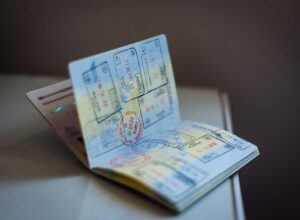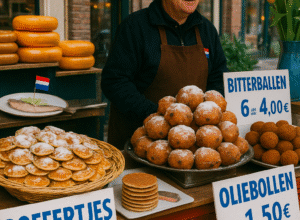The Realities of Housing as a Newcomer
When I first moved to the Netherlands under the DAFT visa, I arrived with no Dutch job contract, no local payslips, and no rental history in the country. In theory, I had every right to be here. In practice, I was invisible to the Dutch rental system.
I ended up paying an entire year’s rent upfront just to secure a modest apartment. That was nearly three years ago. Since then, housing availability has tightened, competition has intensified, and newcomers face even steeper challenges.
Finding a place to live in the Netherlands isn’t impossible—but it does require patience, pragmatism, and a clear understanding of the landscape. Especially when choosing between the high-demand Randstad region and the quieter cities and towns beyond it.
Understanding the Dutch Housing Landscape
The Netherlands is a small country with a dense population and strict building regulations, which means available housing is limited, especially in urban centers.
Most newcomers gravitate toward the Randstad, the densely populated western crescent that includes Amsterdam, Rotterdam, The Hague, and Utrecht. It’s where the majority of international companies are based, where the largest expat communities live, and where the housing shortage is most acute.
Outside this region, you’ll find a different rhythm of life—mid-sized cities like Groningen, Arnhem, or Maastricht, as well as smaller towns and rural areas that offer more breathing room and a different set of trade-offs.
Housing in the Randstad: Convenience at a Cost
The Randstad offers proximity to just about everything: jobs, international schools, cultural events, well-connected train stations, and a sense of being in the center of it all. If you’re relocating for work—or simply want to be surrounded by a familiar level of buzz and bustle—it can feel like the natural choice.
But housing here is scarce and expensive. Rents in Amsterdam easily top €1,500 per month for a one-bedroom. Even outer suburbs command high prices, and competition is intense. It’s not uncommon for dozens of applicants to view a single property—often within hours of a listing going live.
To even be considered, many agencies require:
-
A Dutch employment contract
-
Recent payslips
-
Proof of income at 3–4x the rent
-
A BSN (citizen service number), which you often can’t get until you have an address
And yes, this catch-22 can feel maddening.
If you don’t meet those criteria—as is often the case with freelancers, entrepreneurs, or people on the DAFT visa—you may be asked to pay several months upfront. In my case, it was twelve. This isn’t legally required, but it’s common when landlords want to reduce perceived risk.
Scams also crop up more frequently in high-pressure markets. If it seems too good to be true, it probably is.
Outside the Randstad: Space, Simplicity, and Slower Living
Once you move beyond the Randstad’s orbit, the pressure eases. In cities like Zwolle, Leeuwarden, or even Delft, housing can be more affordable, and landlords may be more flexible—especially if you’re dealing with private owners rather than agencies.
You’ll find:
-
More space for your money
-
Greater likelihood of renting a whole house rather than a small apartment
-
A slower pace of life
-
Less rigid requirements, particularly from individual landlords
That said, it’s not all smooth sailing. English may be less commonly spoken in official processes. Commutes to major cities can be long. And the expat community may be smaller, which can feel isolating at first.
But for those seeking calm, connection to nature, or a deeper integration into Dutch life, non-Randstad living has a quiet kind of richness that’s easy to overlook.
What Americans on the DAFT Visa Should Know
If you’re relocating on the DAFT visa, your legal status is clear—but your financial profile may not be.
Most rental agencies are designed to vet salaried employees. As a freelancer or entrepreneur, you exist in a grey area. Landlords may ask for:
-
A year’s rent upfront
-
Proof of savings
-
A guarantor (sometimes a Dutch resident)
-
Letters of reference
This isn’t ideal—but it’s survivable.
Here are a few tips:
-
Look for private landlords. They’re often more flexible and willing to have a conversation.
-
Use Facebook housing groups, but cautiously. They’re informal and messy, but sometimes lead to real results.
-
Be prepared to show proof of funds. A screenshot of your bank balance goes a long way.
-
Consider short-term housing at first. This gives you breathing room to look in person.
If your budget allows, a relocation service can be a game-changer, especially when navigating language barriers or complex paperwork.
Final Thoughts: Choosing What Kind of Life You Want
Ultimately, where you live shapes how you live.
The Randstad might offer familiarity and fast access to everything—but it comes with a cost, both financial and emotional. Outside the Randstad, you might trade convenience for calm, but you gain a different kind of freedom.
Neither option is better across the board. It depends on what you value: community or quiet, culture or comfort, convenience or connection.
Finding a home in the Netherlands is rarely straightforward. But it’s not just about where you can find a place—it’s about where your life can actually unfold.








